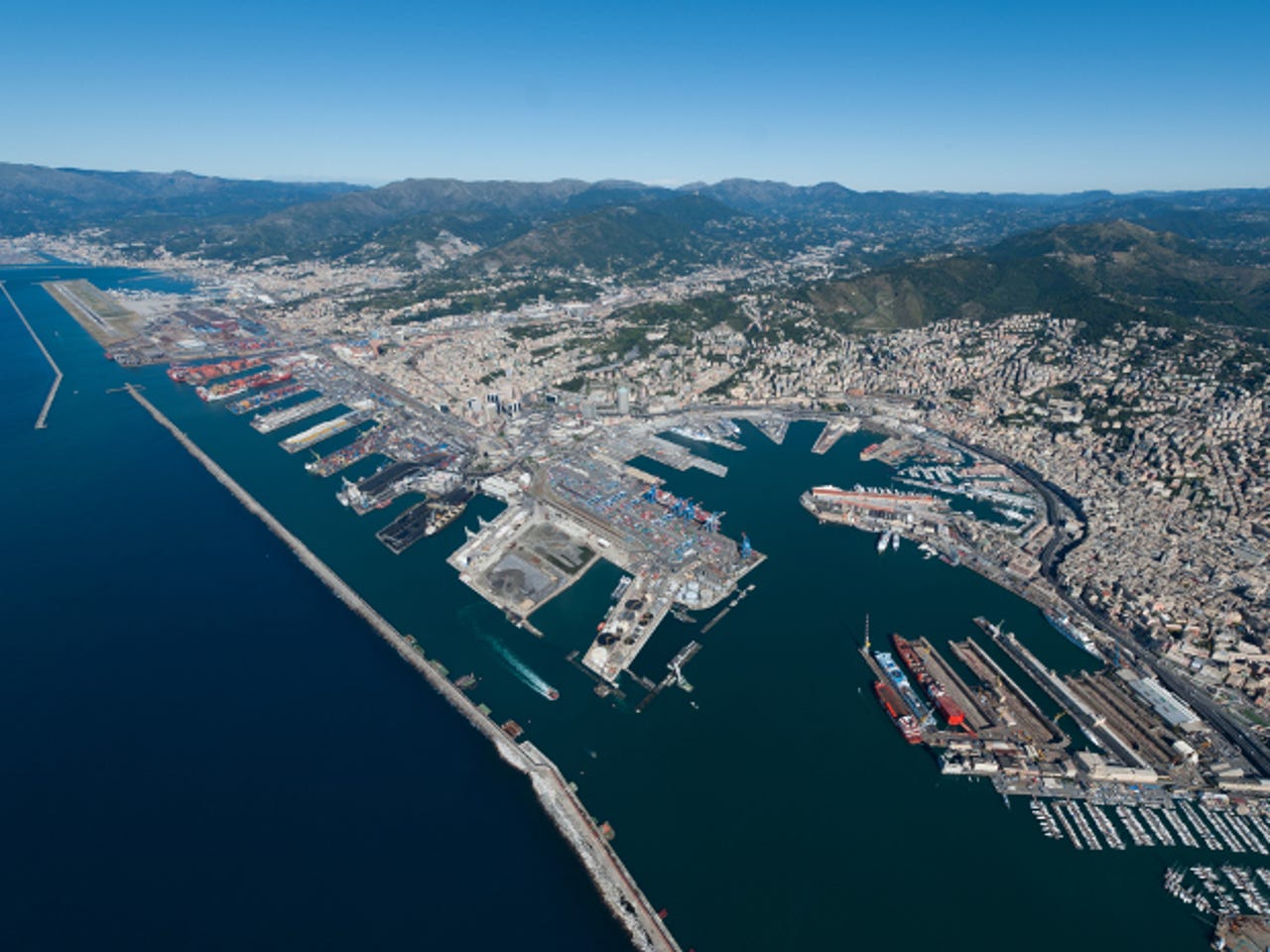Truck and trace: The clever tech that's turning Italian customs into a moveable feast


Unfortunately the geography of the city, a thin strip of land between the sea and the Apennine mountains, leaves the port no room to enlarge. Luckily for Genoa's economy, which revolves much around its harbor, where bulldozers can't reach, smartphones and sensors may provide the port with a way forwards.
The Genoa Port Authority started experimenting with a virtual extension of the dock last month with the launch of a new ICT project called 'Banchina lunghissima' (which translates as 'very long dock'). The project has made it possible for a good portion of incoming containers to be moved out of the port areas by truck as soon as they are unloaded from the ships and to clear customers at their destination rather than in the port itself.
"The result is that containers leave the docks more quickly, which frees up space and means we can handle even more boxes," Luigi Merlo, the president of Genoa's Port Authority, told ZDNet. "It's just as if we were adding a new terminal but without the need for any construction work." The Banchina lunghissima project, along with other changes to customs clearance procedures, he added, will help the port manage up to 100,000 more containers a year in the near future.
But in order for the project to be feasible - and legally possible - the containers must be kept under strict control until customs clearance is completed at the freight's final destination.
That's where IT can help. The trucks carrying the containers are equipped with onboard GPS-enabled units that capture the vehicle's position every 30 seconds, forwarding it on to the Port Authority every two minutes, enabling the organization to monitor the route in real time.
The system - implemented by Uirnet, a government-owned company which develops technologies for the Italian logistics industry - is designed to automatically generate alerts if something unexpected happens to the vehicles.
Notifications are sent if the trucks deviate from their planned route, if unauthorized stops are made, if the trip takes longer than it should, or attempts to tamper with the onboard units are detected.
"Basically this technology framework allows you to be sure that each container reaches its final destination in the exact same condition as it was when it was unloaded from the ship. The goal is to get the same security standards you can achieve by shipping containers through railways," Riccardo Marchetti, Uirnet's technical director, told ZDNet. Once this happens, customs clearance procedures can be carried out by the Italian Customs Agency's officials several kilometers away from the seaport, as if the containers had landed in Italy there.
Thanks to the onboard sensors and the platform developed by Uirnet, the Italian Customs Agency and the companies who are shipping the freight can control the route by logging in to a dedicated website. The truck driver can receive information, such as the truck's itinerary on a map or if the trip is taking longer than expected, via a mobile app (only for Android-powered devices, for now).
"The biggest part of our technical work is to make sure that the system is reliable but doesn't send too many false positives," Marchetti said. "For the GPS, speeds under 5kmph is equal to zero and that could prompt the system to send an alert, so we have to add more information in order for an unauthorized stop to be reported, otherwise even slowing down due to a traffic congestion could be wrongly interpreted."
The first boxes to be processed under the Banchina lunghissima scheme were loaded with Ikea furniture and cleared customs at a company warehouse in Piacenza, some 150km outside Genoa.
The Swedish retail giant agreed to be involved in the trial in the hope that it would speed up its freight delivery. "Times will be cut by at least 70 percent," Merlo said. "Right now, an Ikea container can exit the port in less than an hour. Previously, it might have to stay in the terminal for three to four days."
The fact that Ikea signed up to the project and kept Genoa as the destination for its freight is seen by the local Port Authority as a sign that the direction it has taken is the right one. "Nowadays, we are forced to make more intensive use of ICT because the world's traffic is increasingly moving towards smart ports that offer more efficient operations," Merlo said.
Read more from Italy